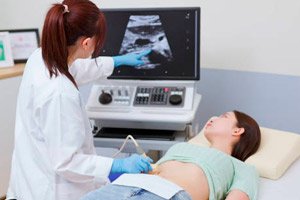
All iLive content is medically reviewed or fact checked to ensure as much factual accuracy as possible.
We have strict sourcing guidelines and only link to reputable media sites, academic research institutions and, whenever possible, medically peer reviewed studies. Note that the numbers in parentheses ([1], [2], etc.) are clickable links to these studies.
If you feel that any of our content is inaccurate, out-of-date, or otherwise questionable, please select it and press Ctrl + Enter.
Endometriosis and uterine myomas may increase the risk of premature death in women
Last reviewed: 02.07.2025
 ">
">Women with a history of endometriosis and uterine fibroids may have an increased long-term risk of premature death, according to a large US study published today in The BMJ.
Endometriosis and uterine fibroids are common conditions among women of reproductive age. Endometriosis occurs when tissue similar to the endometrium (the lining of the uterus) grows in other places, such as the ovaries and fallopian tubes. Uterine fibroids are benign growths that form in or around the uterus.
Background of the study
Previous evidence suggests that both conditions are associated with increased long-term risk of chronic diseases such as hypertension, cardiovascular disease and some cancers. However, their impact on the risk of dying before age 70 has remained unclear.
To examine this link, the researchers analyzed data from 110,091 women participating in the Nurses' Health Study II. At the start of the study in 1989, the participants were 25 to 42 years old and had no history of hysterectomy prior to diagnosis of endometriosis or fibroids, cardiovascular disease, or cancer.
Beginning in 1993 and every two years, women reported diagnoses of endometriosis (confirmed by laparoscopy) and uterine fibroids (confirmed by ultrasound or hysterectomy). Other factors were taken into account, including age, ethnicity, reproductive history, use of hormone replacement therapy, oral contraceptive use, regular use of aspirin or anti-inflammatory drugs, and other health factors.
Key Results
During 30 years of follow-up, 4,356 cases of premature death were recorded, including:
- 1,459 from cancer,
- 304 from cardiovascular diseases,
- 90 from respiratory diseases.
The overall incidence of premature death for women with confirmed endometriosis was 2 per 1,000 person-years, compared with 1.4 per 1,000 person-years for women without endometriosis.
After adjusting the data for age, body mass index (BMI), diet quality, physical activity level and smoking:
- Endometriosis was associated with a 31% higher risk of premature death, which was mainly explained by deaths from gynecologic cancers.
- Uterine fibroids were not associated with premature death from all causes, but were associated with an increased risk of death from gynecologic cancers.
Limitations and Significance
The researchers acknowledge that these findings are based on observational data and self-reports, which may contain errors. The study participants were mostly white health care workers, so the results may not be representative of other populations. The influence of other, unaccounted for factors also cannot be completely ruled out.
However, this was a large study with regular follow-up over nearly three decades, reducing the likelihood of recall bias.
Conclusions
The authors conclude:
"Our findings suggest that women with a history of endometriosis and uterine fibroids may have an increased long-term risk of premature death that continues beyond their reproductive years."
Besides:
- These conditions are associated with an increased risk of death from gynecologic cancers.
- Endometriosis is also associated with a higher risk of death from nongynecologic causes.
Practical implications: These findings highlight the importance for primary care physicians to consider these gynecologic conditions when assessing women's health and developing prevention strategies.
